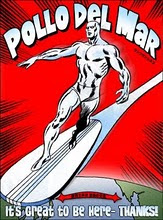To grasp the invisible elements, to attract them by their material correspondence, to control, purify and transform them by the living power of the spirit, this is true alchemy.
~Paracelsus (1493-1541)Before any sort of chemical bonding was even thought of there were charts of so-called affinities. I found this interesting chart dating from 1718 on Wiki. It teaches how the then-known "elements" combined with each other. The top row identifies an element and the columns contain those elements with which it combines. Note that sulfur (middle column) was considered the most promiscuous element, consistent with its primacy as the "soul" of matter according to alchemy. Also bear in mind that this simple chart condenses the then known science of chemisty, ca. 1718. I like the arcane symbols and could see using some them as avatars depending on my mood:
 |
| Click to enlarge or see link above |
Here are my translations of the "elements."
Esprit acides : Acidic (acerbic) spirits
Acide du sel marin: Lit. acid of sea salt, HCl (which was thought to contain oxygen until Davy showed otherwise: link)
Acide nitreux: Nitric and nitrous acids, HNO3, HNO2
Acide vitriolique: Sulfuric and sulfurous acids, derived from oleum & vitriol.
Sel alcali fixe: Sodium & potassium hydroxides and carbonates.
Sel alcali volatil: Sal ammoniac, NH4Cl, which sublimed and was endlessly fascinating.
Terre absorbante: Silicates (sand) and diatomaceous earth.
Substances metalliques: Metallic substances
Mercure: Mercury was considered to be the spirit of matter.
Regule d'Antimoine: Regulus of antimony--metallic antimony. Regulus means "little King"
Or: Gold
Argent: Silver
Cuivre: Copper
Fer: Iron
Plomb: lead
Etain: Tin
Zinc
Pierre Calaminaire: Lit. calamine stone, i.e., calamine ore. Note the French place name.
Soufre mineral: Sulfur or brimstone. This material held a special place in alchemy, along with mercury and salt.
Principe huileux ou Soufre: The oily essence of organic substances from plants, also called the "sulfur." See the interesting discussion under Spagyric.
Esprit de vinaigre: Vinegar or acetic acid
Eau: water
Sel: Salt held a special place in alchemy along with mercury and sulfur.
Esprit de vin et Esprit ardents: Any of the flammable alcohols derived from fermentation, e.g., ethanol, methanol, etc.




